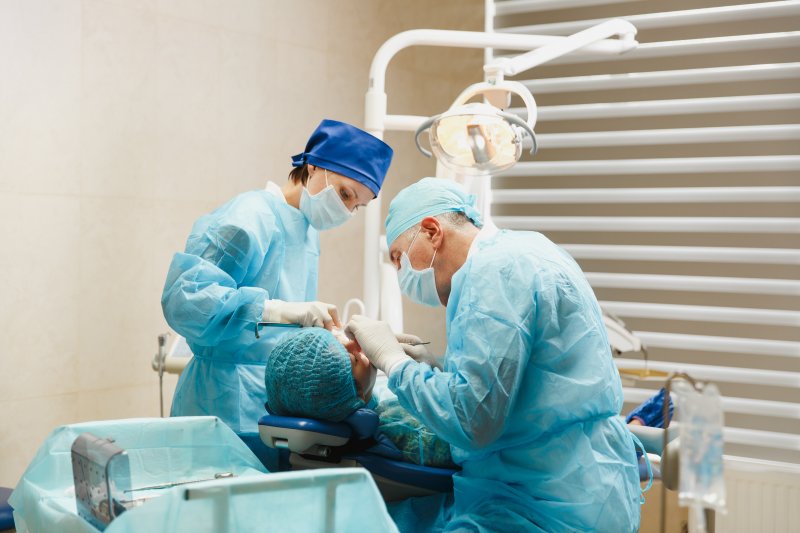
Dental implants are known for having an incredibly high success rate, but there is always a small chance that they can still fail. By taking proper precautions, dental implant failure can be avoided in most cases. In the event a dentist recommends removing a failed dental implant in Edison, it helps to understand the process ahead of time so you can set expectations early. Keep in mind if they are recommending a removal, it’s because all other options have been considered.
Common Reasons for Removing Dental Implants
While dental implants can fail as a result of injury, it’s more common for them to fail due to an infection known as peri-implantitis. This condition develops as a result of harmful bacteria attacking the gum and bone tissue surrounding the implant. When caught in the early stages, it can be reversible and the implant could be salvaged. However, late-stage peri-implantitis typically requires removal of the implant entirely to remove the infection, clean the socket, and perform other treatments favorable for a replacement implant.
Another potential cause of dental implant failure is failed osseointegration (where the implant post does not fuse properly with the jawbone). While most dentists will take the precautions to avoid this from occurring, it can still happen in rare cases.
How Dental Implant Removal Works
When you arrive at the dental office, the prosthodontist will perform a detailed evaluation of your implant and confirm if it can be salvaged or not. When the damage is too significant, the implant will need to be removed so the infection can be properly treated. As part of the removal, the prosthodontist will do their best to maintain as much healthy bone tissue as possible. By doing so, it will be easier to have a replacement implant attached if possible.
After opening the gums, cutting away small amounts of bone tissue, applying additional bone grafting material, and closing the gum tissue, you’ll be given time to heal over the next several months.
Can Another Dental Implant Be Placed?
The chances of a replacement implant being viable all depend on how your bone and soft tissue heal following the removal of the failed implant. It’s essential that you follow all aftercare instructions after your surgery and maintain a healthy oral care routine at home to prevent the risk of the infection coming back. If your bone graft is successful, the prosthodontist will revisit the tooth replacement process and confirm if dental implants are viable for your unique case. If not, you may be recommended other options, including a dental bridge or denture.
Are you afraid you may have a failing dental implant? Get in touch with a prosthodontist today to learn more about your options going forward.
About the Author
Dr. Vrajesh Shah is a highly experienced prosthodontist trained to perform many specialized oral surgeries, including the placement of dental implants, dental implant failure and salvage, bone grafting and more. He utilizes advanced dental technology at his practice to ensure the best outcome possible for his patients. To schedule an appointment, you can contact him through his website.
